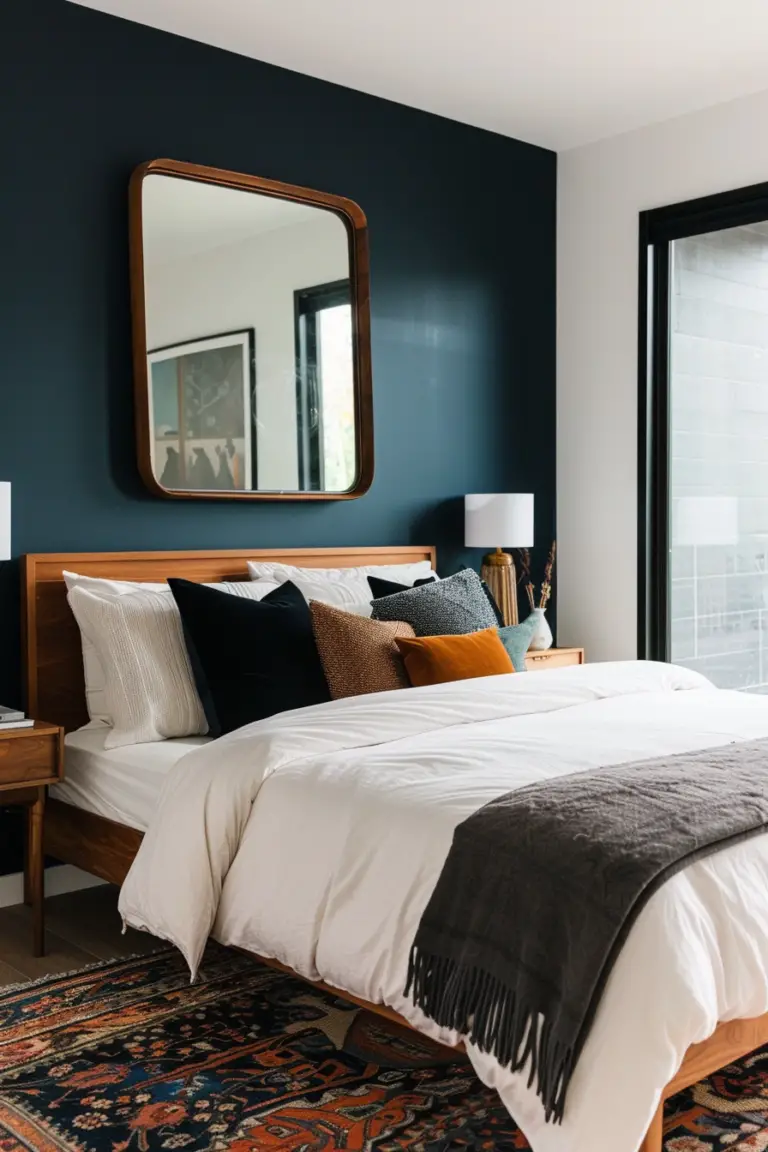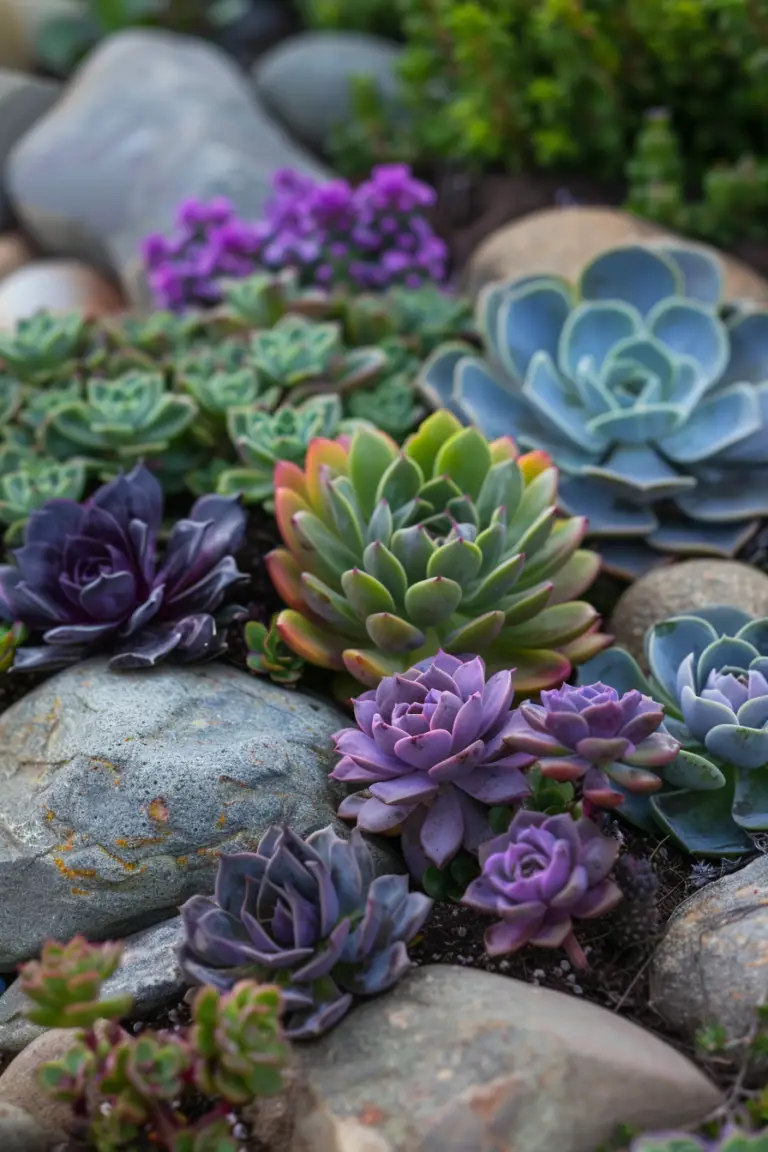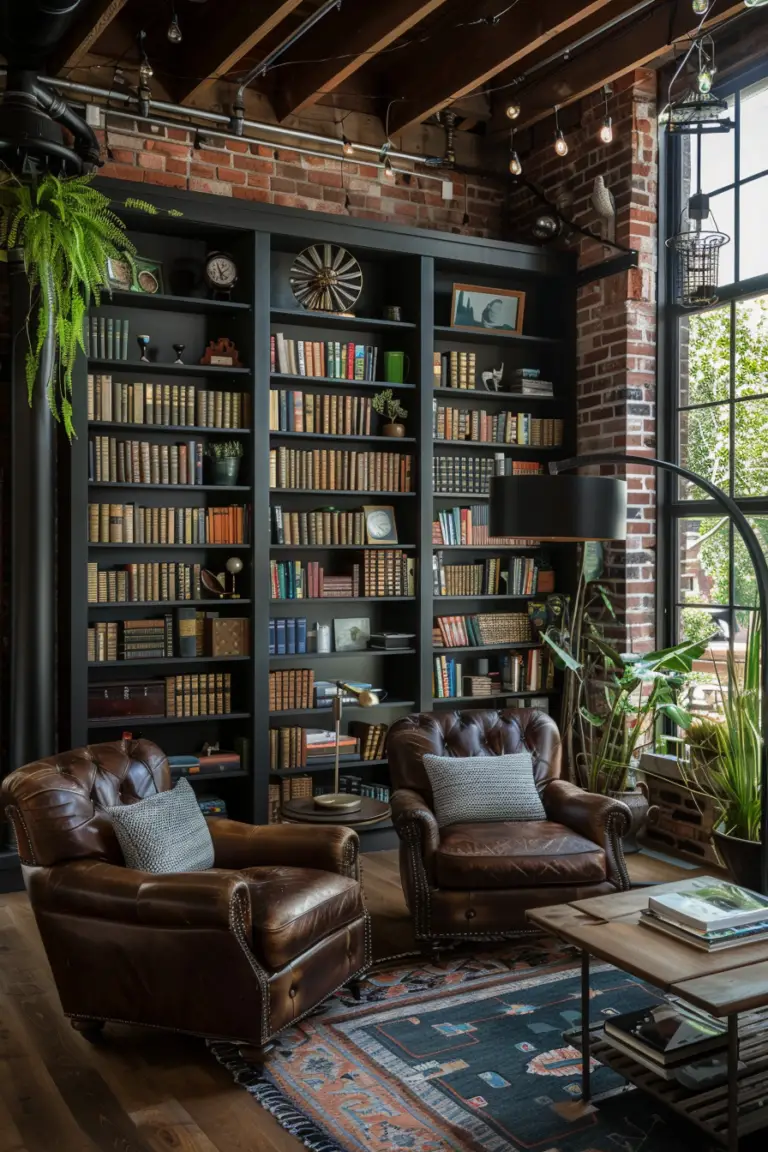Plant Picks and Ideas for Adding Curb Appeal to Your Small Front Yard
Did you know that even the tiniest front yard can make a colossal impact on your home’s first impression? That’s right! Your small front yard is a golden opportunity to showcase your style and boost curb appeal without breaking the bank. Let’s dive into how you can transform that petite space into a charming oasis that welcomes you home every day.
Embrace the Power of Vertical Gardening
When ground space is limited, think upwards!
- Install trellises or vertical planters to grow climbing plants like jasmine or clematis.
- Hang planters from porch ceilings or walls for a splash of color at eye level.
- Opt for tall, slender trees like cypress or ornamental grasses to add height without crowding.
(Vertical gardening not only saves space but also adds a lush, layered look to your yard.)
Choose Plants That Pack a Punch
Select plants that offer multiple seasons of interest.
- Perennials like lavender or echinacea bloom beautifully and return each year.
- Evergreen shrubs provide year-round greenery.
- Bulbs like daffodils or tulips (easy to plant and budget-friendly) bring vibrant spring colors.
Create a Welcoming Pathway
A well-defined path can make your yard feel inviting and spacious.
- Use stepping stones or gravel to craft a simple walkway.
- Line the path with low-growing plants like hostas or creeping thyme.
- Incorporate solar-powered lights for an enchanting glow at night.
Add Personal Touches with Decor
Little accents can make a big difference!
- Place a brightly colored bench or chair as a focal point.
- Decorative pots or planters (get crafty and paint your own!) add personality.
- Hang a wreath or sign on your front door to express your style.
Opt for Low-Maintenance Options
Save time and effort with plants and materials that are easy to care for.
- Use mulch or decorative stones to reduce weeds.
- Choose drought-resistant plants like succulents or sedum.
- Install a rain barrel (eco-friendly and cost-effective) for watering needs.
Budget-Friendly Tips
Transform your yard without emptying your wallet.
- Swap plants with friends or neighbors to diversify your garden for free.
- Visit local nursery sales or farmers’ markets for discounted plants.
- DIY your decor using reclaimed materials or thrift store finds.
Quick Wins to Get Started
Ready to roll up your sleeves? Here are some quick actions:
- Declutter and tidy up your existing space for an immediate refresh.
- Plant a mix of colorful annuals for instant vibrancy.
- Add a mulch layer to make your plants pop and conserve moisture.
- Install a simple border using bricks or stones to define garden beds.
- Hang a few planters by the front door for a welcoming touch.
1. Create a Layered Look with Boxwood Hedges
Boxwood hedges are a staple in American front yard landscaping. Their dense, evergreen foliage is perfect for creating structure and adding depth to your yard.
How to Use: Plant boxwood along pathways or property lines to define borders. Mix different heights for a tiered effect, and trim them into clean, geometric shapes for a classic look.
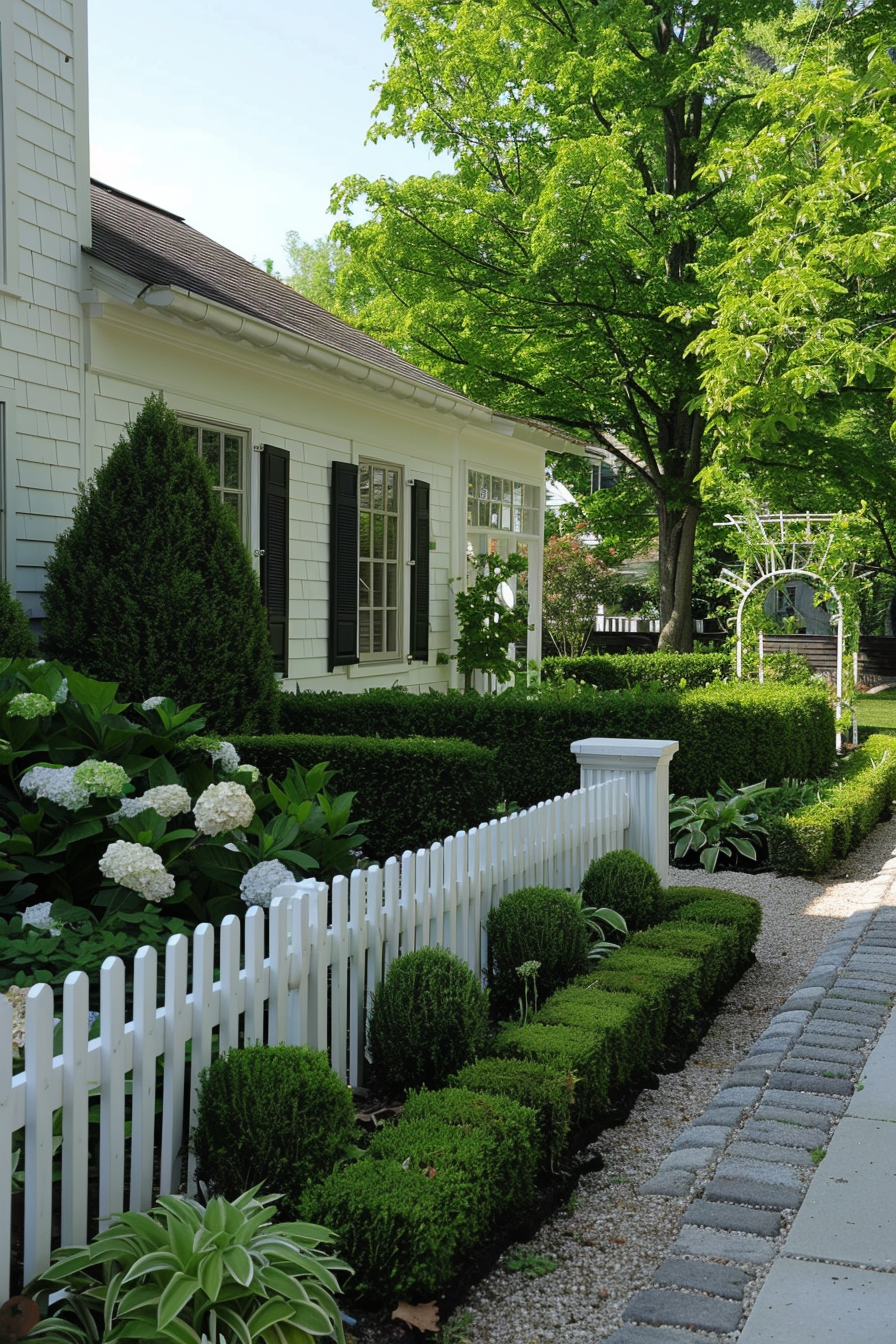
2. Accent with Vibrant Azaleas
Azaleas are prized for their bright, colorful blooms in spring and early summer, making them perfect for adding a pop of color to your yard.
How to Use: Plant azaleas in clusters around your front door or along the foundation of your house. Choose varieties that bloom in complementary colors to enhance visual interest.
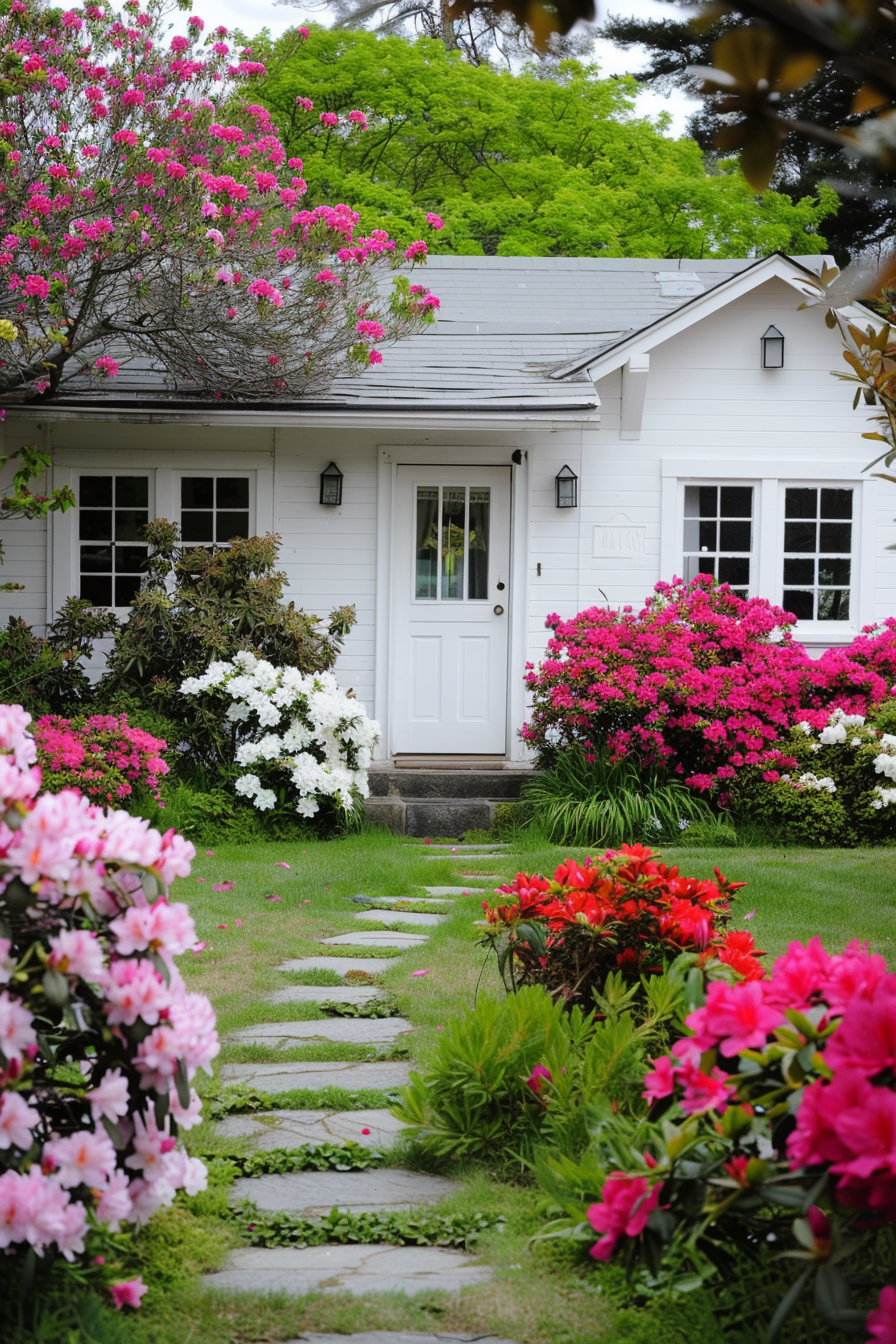
3. Embrace the Elegance of Japanese Maple
Japanese Maples are small, ornamental trees known for their striking red or green foliage. They add a touch of elegance and sophistication to any landscape.
How to Use: Position a Japanese Maple as a focal point near your front entrance or at the corner of your yard. Underplant with shade-loving perennials like hostas or ferns to complete the look.
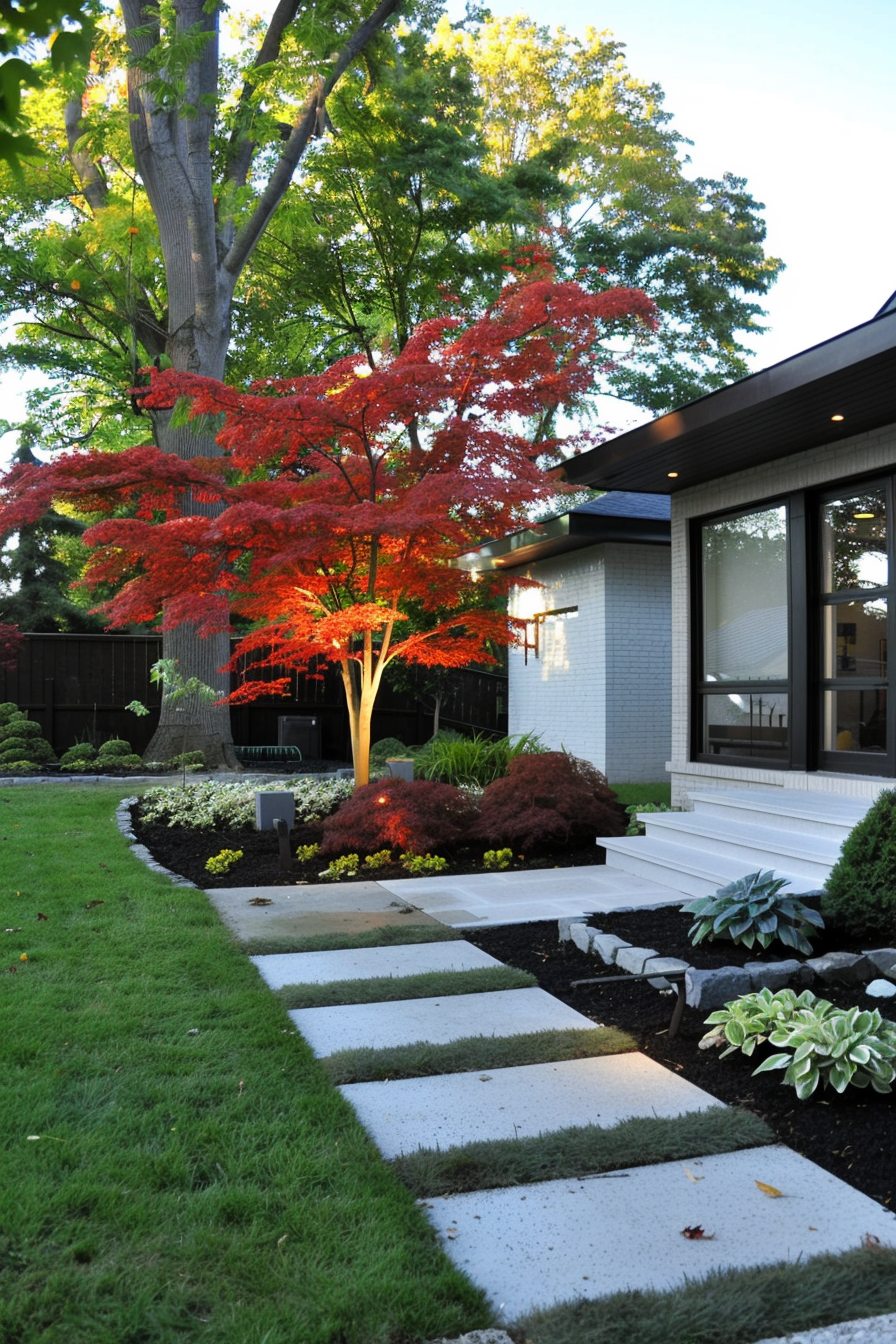
4. Add Texture with Ornamental Grasses
Ornamental grasses like Feather Reed Grass or Fountain Grass offer unique textures and movement, bringing a dynamic element to your landscape.
How to Use: Plant ornamental grasses in clusters or as borders along walkways. Their graceful, swaying plumes add a touch of wild beauty and are particularly striking in the wind.
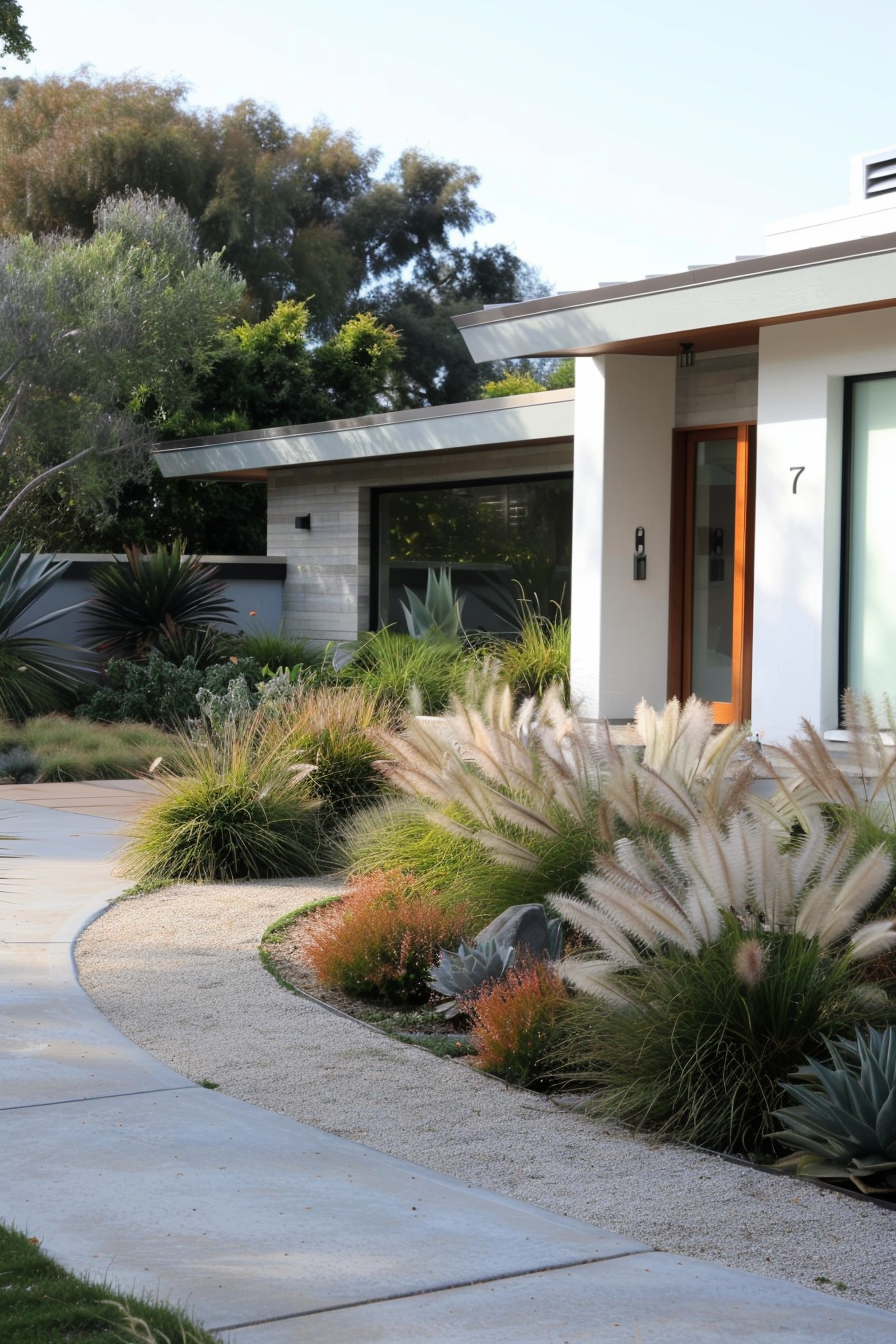
5. Brighten Up with Flowering Perennials
Perennials such as Black-eyed Susans, Daylilies, and Coneflowers bring long-lasting color and interest throughout the growing season.
How to Use: Group perennials in beds or along borders for continuous blooms. Mix varieties that flower at different times to ensure your yard is always vibrant.
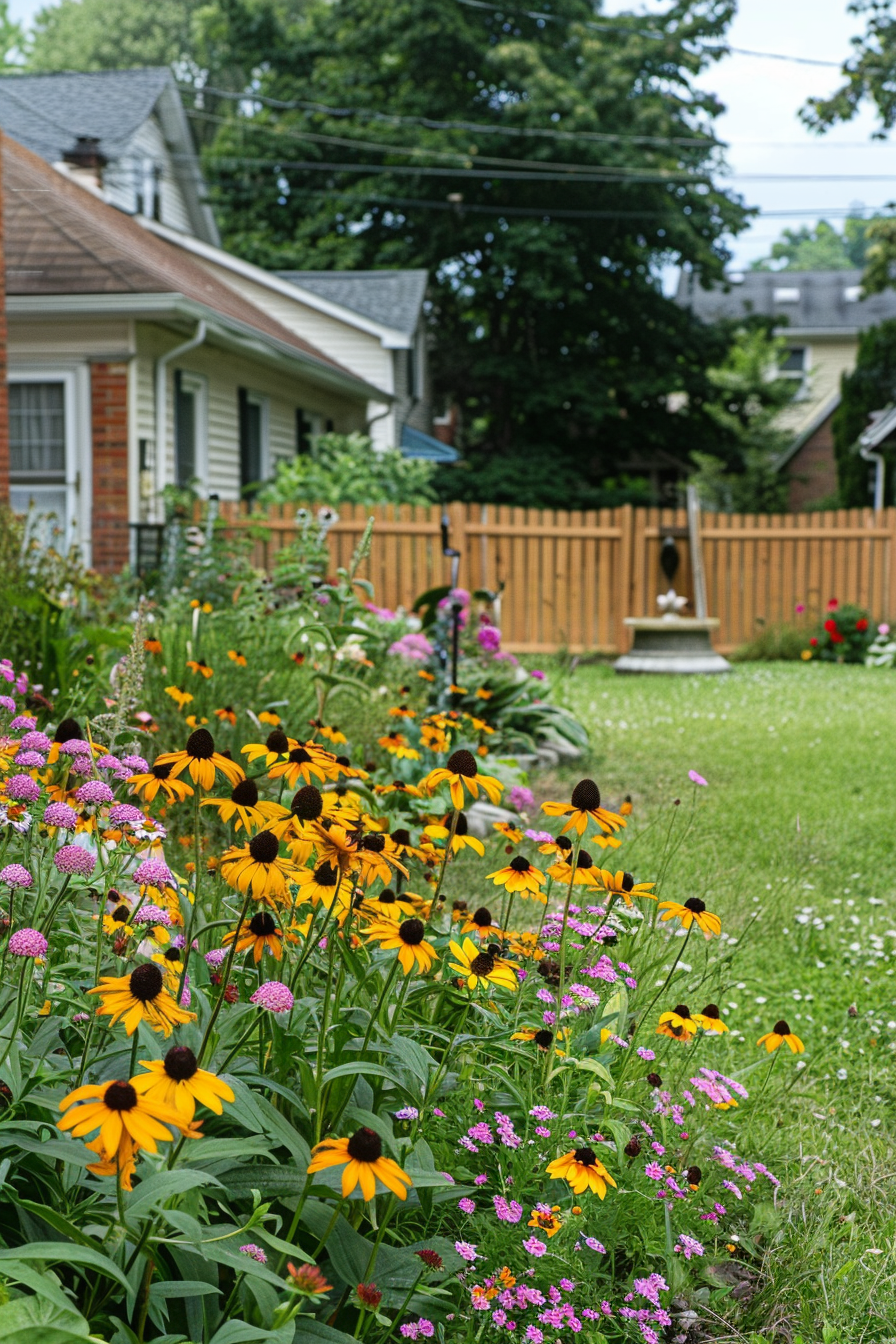
6. Soften Hardscapes with Creeping Thyme
Creeping Thyme is a hardy ground cover that thrives in sunny areas and is perfect for softening the edges of hardscapes like patios and pathways.
How to Use: Plant Creeping Thyme between stepping stones or along the edges of walkways. Its aromatic foliage and small, colorful blooms add charm and help suppress weeds.
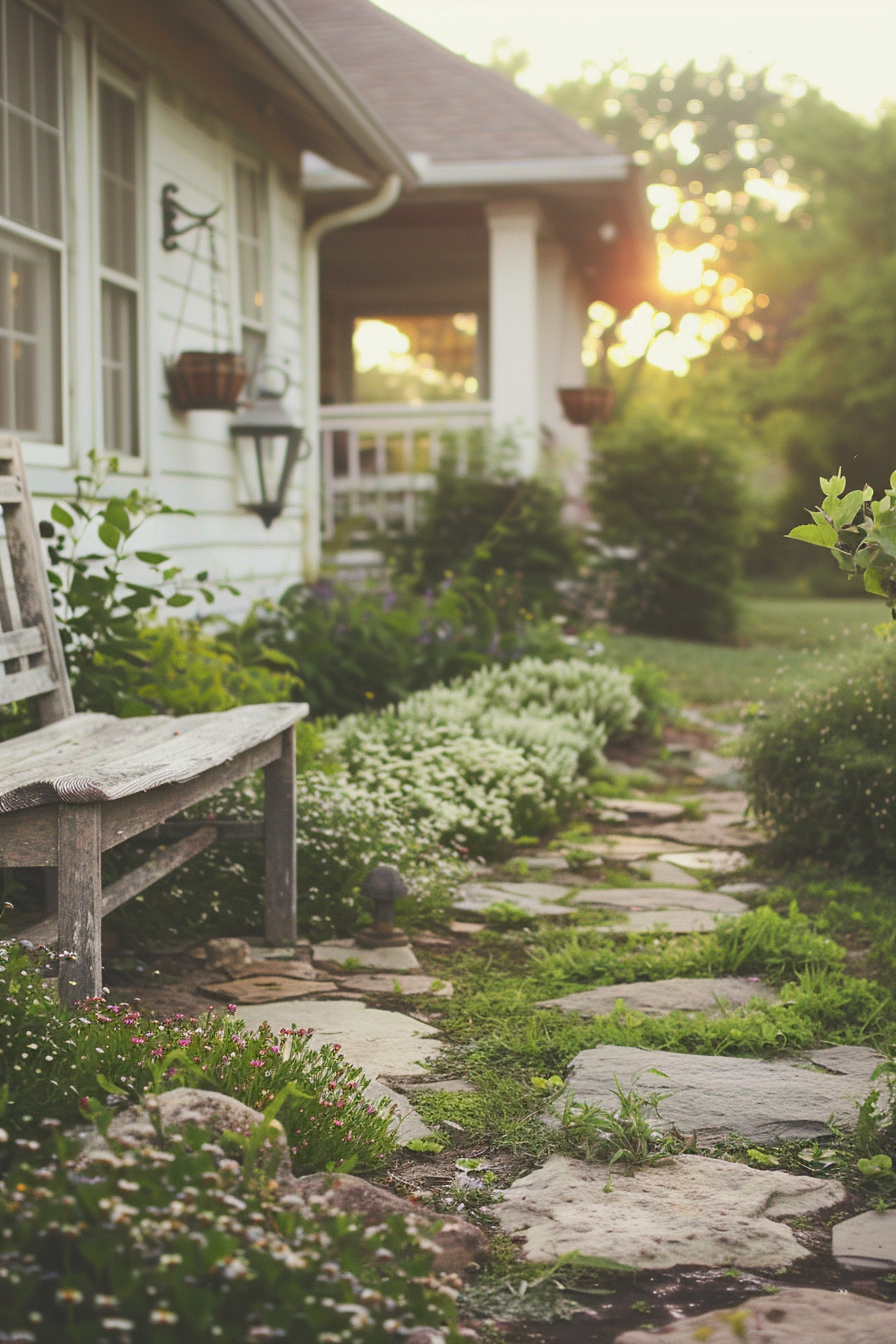
7. Frame Your Entrance with Dwarf Evergreens
Dwarf evergreens like Dwarf Alberta Spruce or Boxwood are perfect for framing doorways and creating year-round greenery.
How to Use: Place dwarf evergreens in pots on either side of your front door or plant them in the ground flanking your entrance. They provide symmetry and a welcoming appearance.
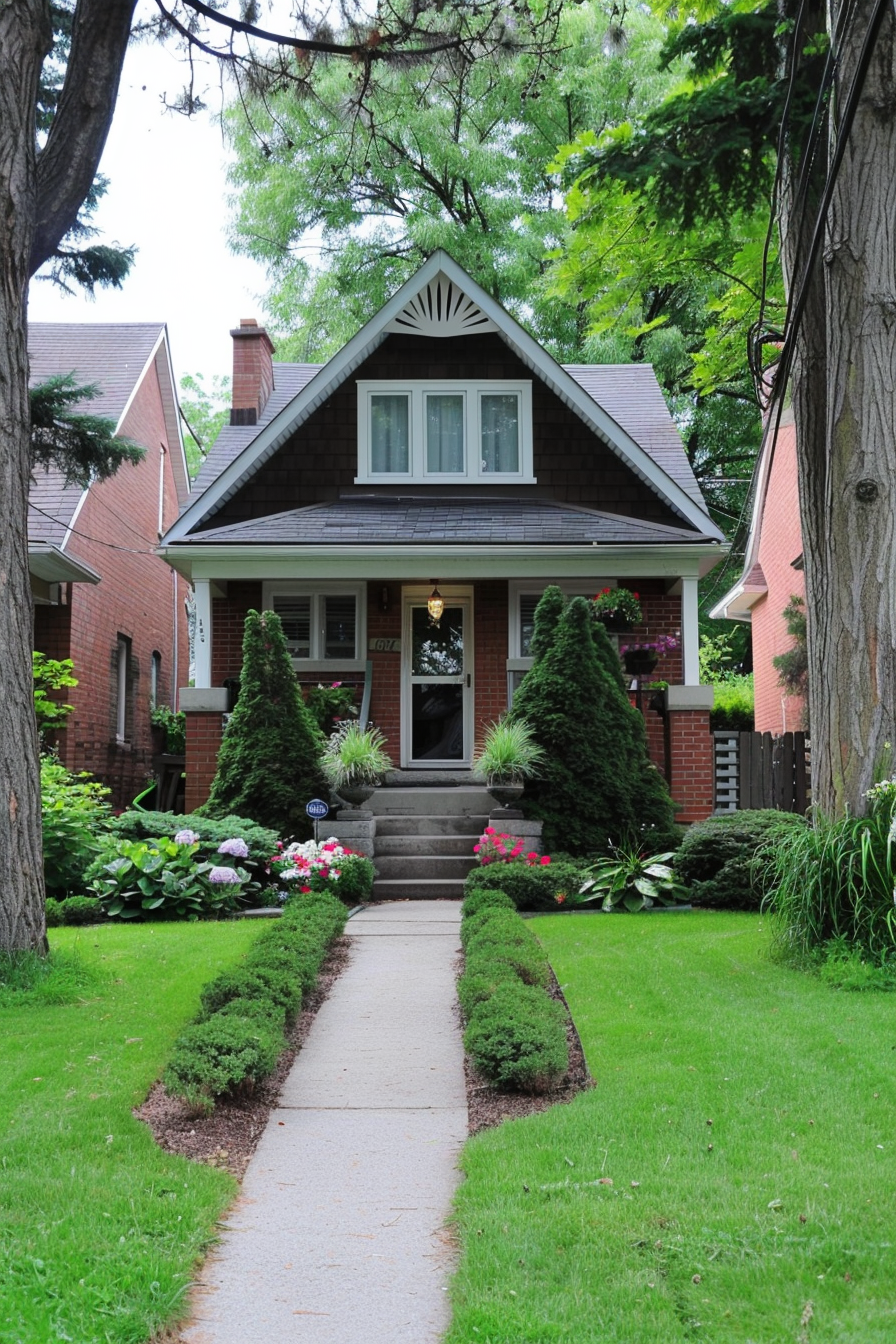
8. Utilize Ground Cover Plants for Low Maintenance
Low-growing ground covers like Pachysandra or Creeping Jenny provide lush coverage with minimal maintenance and are perfect for filling in bare spots.
How to Use: Plant ground covers in shady areas or under trees where grass struggles to grow. They create a dense, carpet-like effect and help reduce soil erosion.
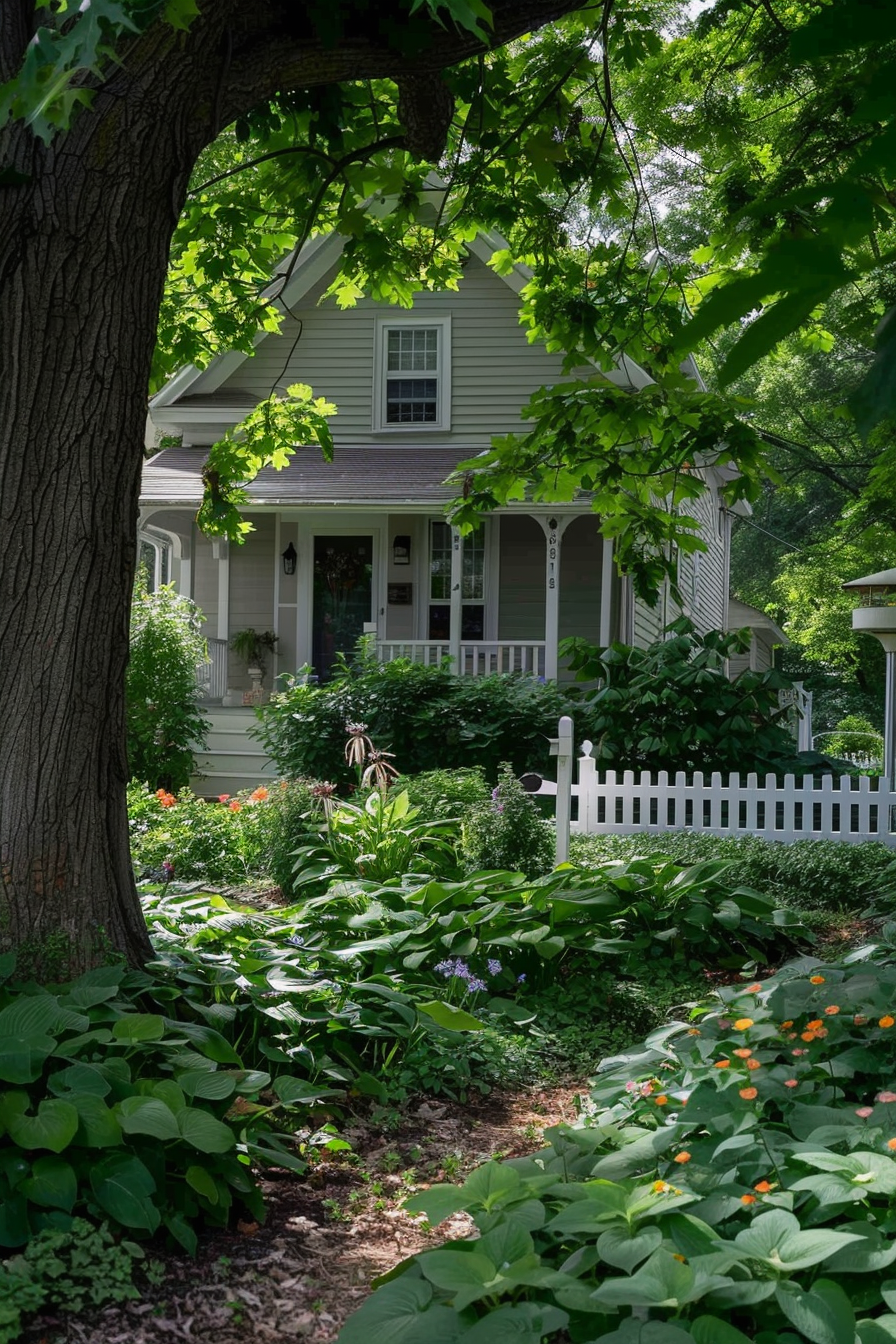
9. Enhance Curb Appeal with Hydrangeas
Hydrangeas are beloved for their large, showy blooms that can vary in color from blue to pink depending on the soil pH.
How to Use: Plant hydrangeas along the front of your house or in clusters for a dramatic effect. Their flowers provide a beautiful contrast against green foliage and add significant curb appeal.
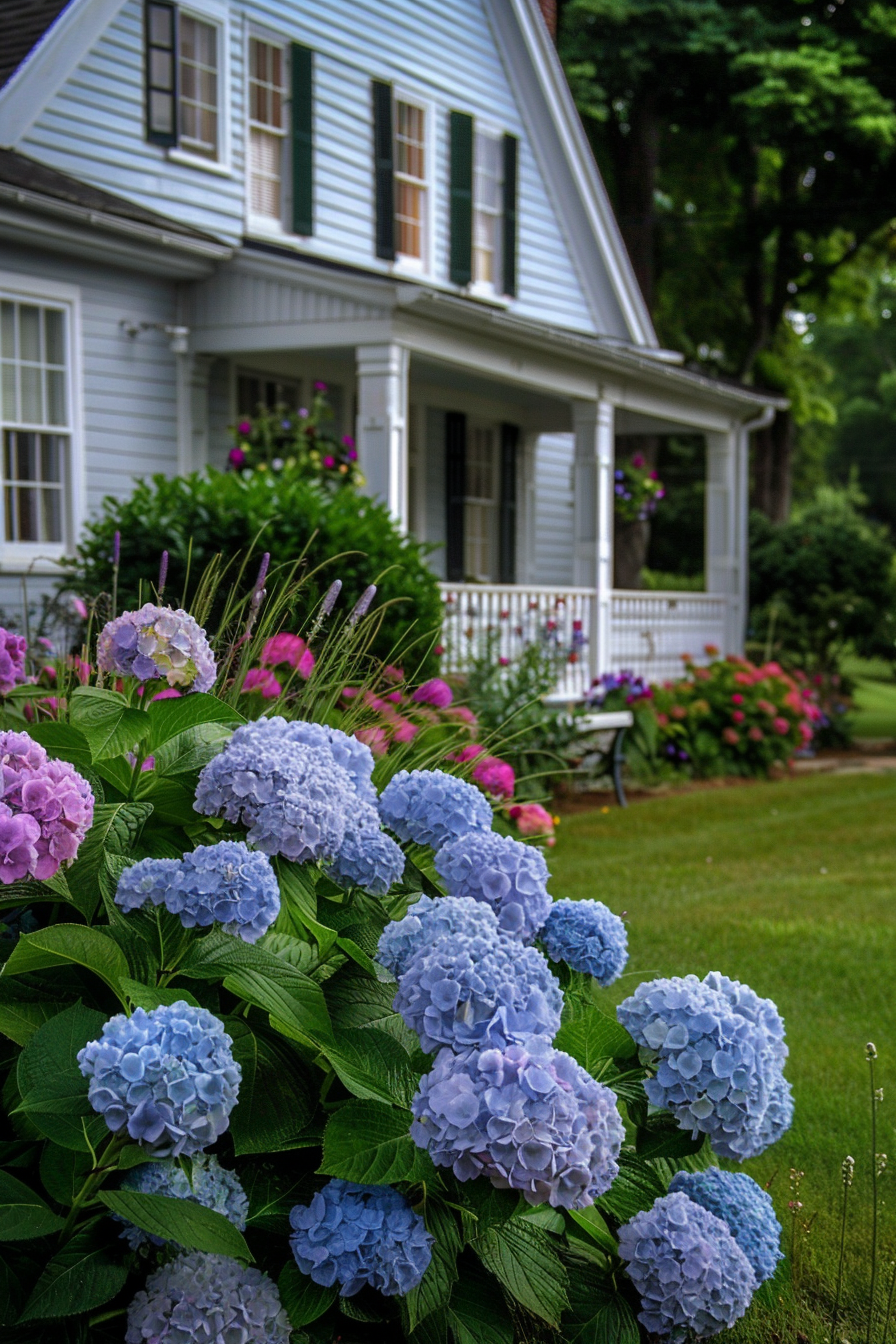
10. Introduce Vertical Interest with Climbing Roses
Climbing Roses add vertical interest and a touch of romance to your front yard, perfect for covering walls, trellises, or fences.
How to Use: Train climbing roses on a trellis or along the front of your house. Choose varieties with repeat blooms to enjoy flowers throughout the season.
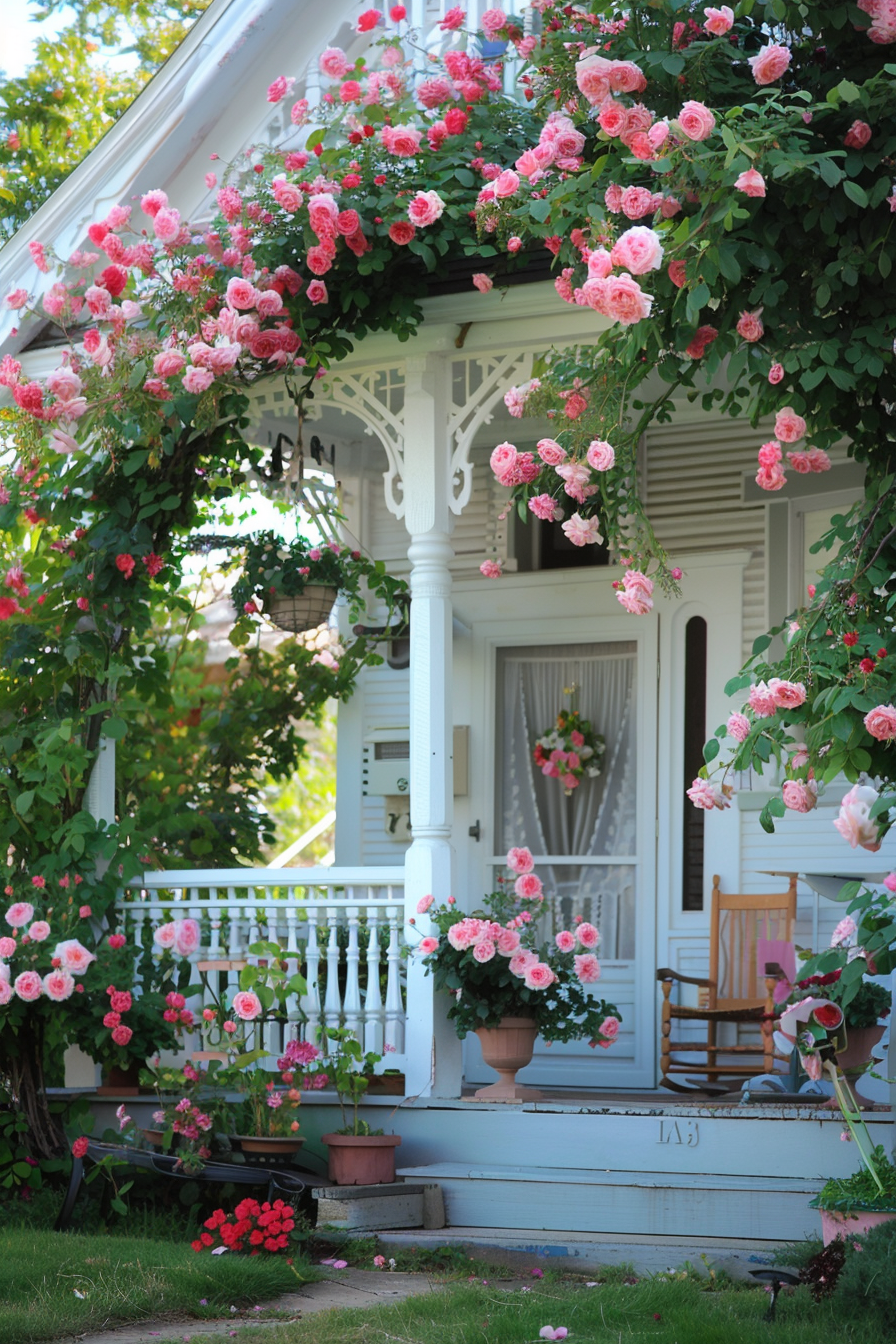
11. Highlight Your Walkway with Lavender
Lavender is known for its fragrant, purple flowers and silvery-green foliage, making it perfect for lining walkways and borders.
How to Use: Plant lavender along pathways or borders to create a fragrant, visually appealing edge. Its compact size and drought tolerance make it an ideal choice for small spaces.
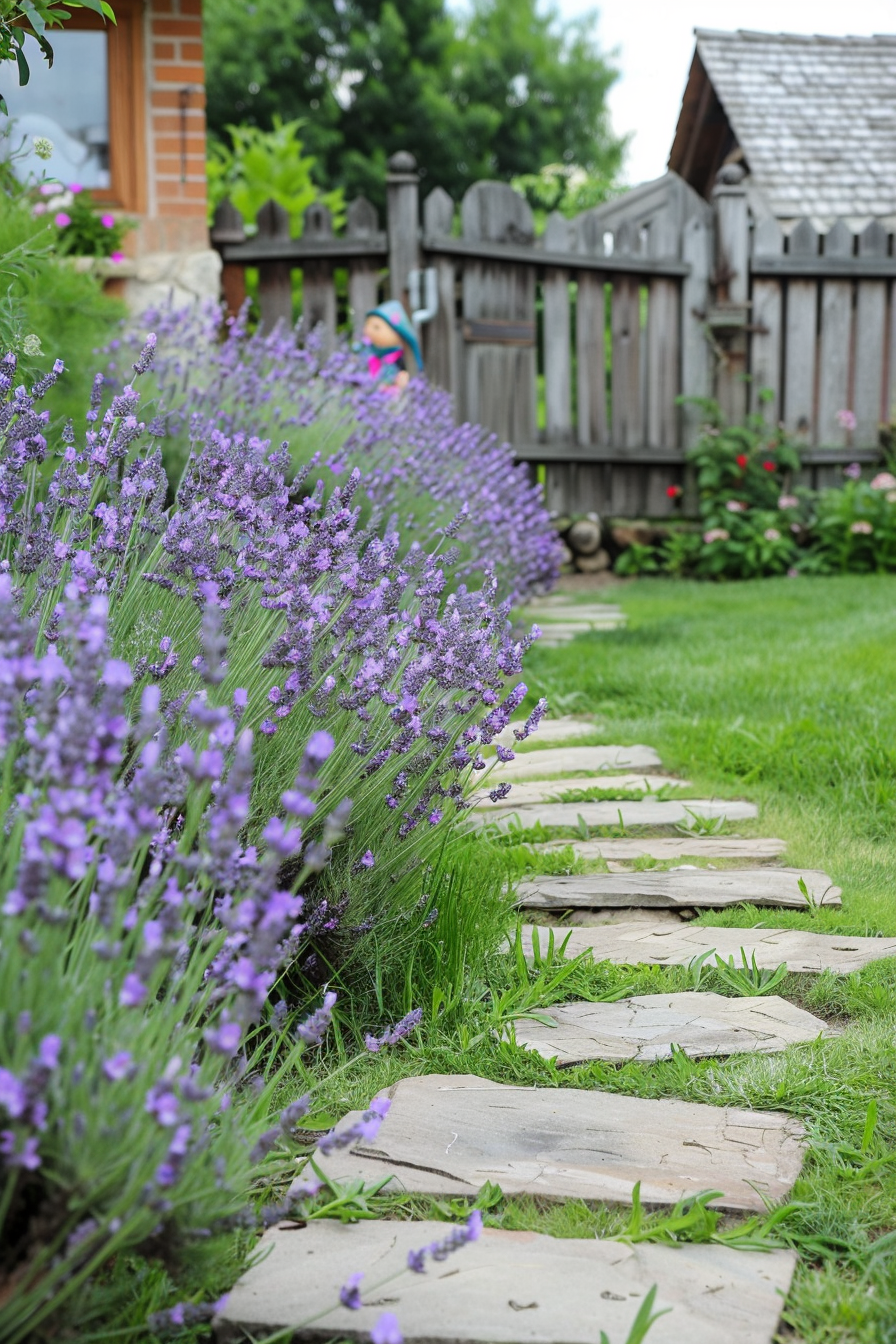
12. Mix in Annuals for Seasonal Color
Annuals like Petunias, Marigolds, and Impatiens provide vibrant, seasonal color that can be easily changed from year to year.
How to Use: Use annuals to fill in gaps in flower beds or as colorful borders along pathways. Their bright blooms will keep your yard looking fresh and lively throughout the growing season.
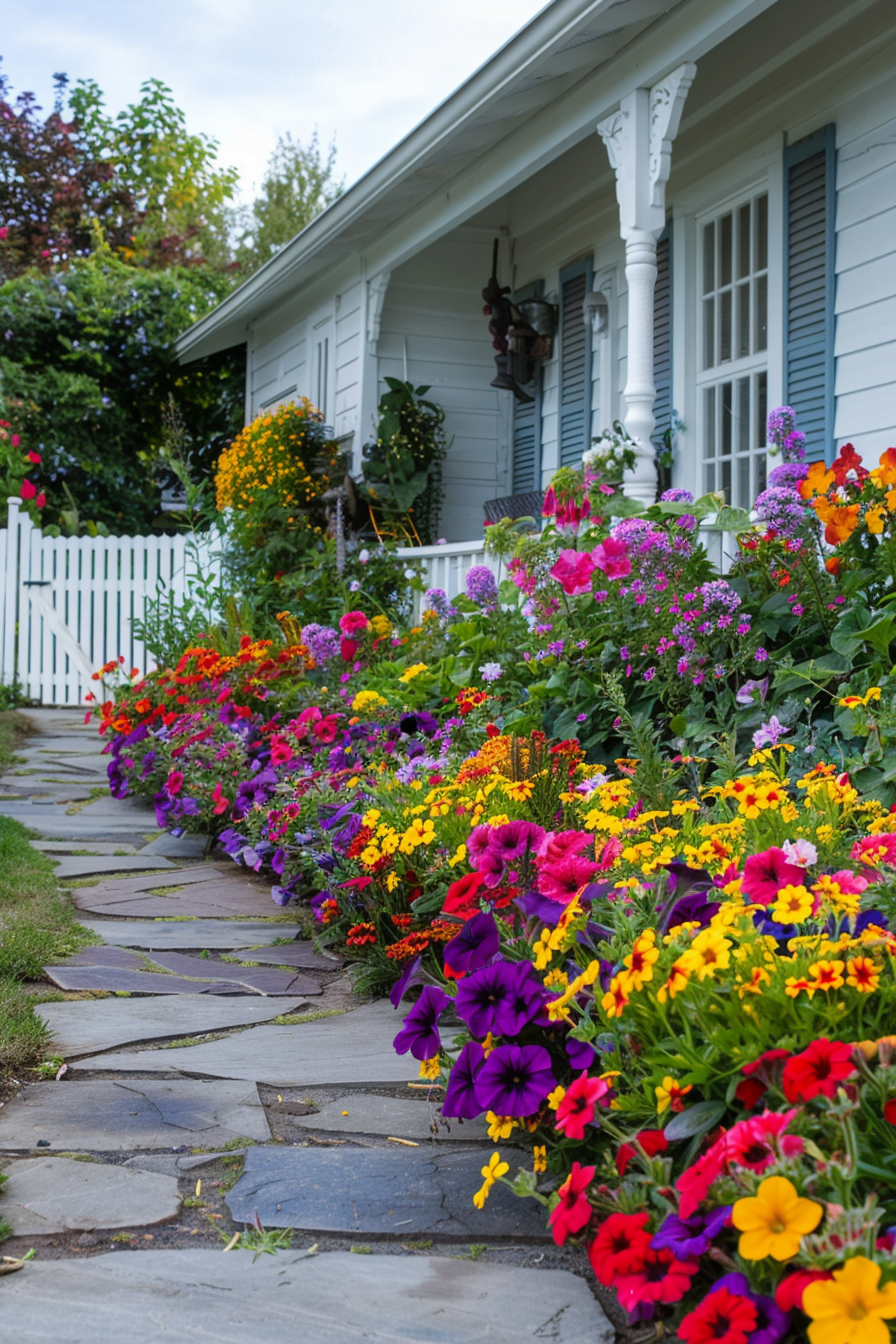
13. Create a Focal Point with a Bird Bath
A bird bath serves as both a functional and decorative focal point, attracting birds and adding an element of interest to your yard.
How to Use: Place a bird bath in a prominent location, such as the center of a flower bed or at the end of a pathway. Surround it with flowering plants and ground covers to create a picturesque scene.
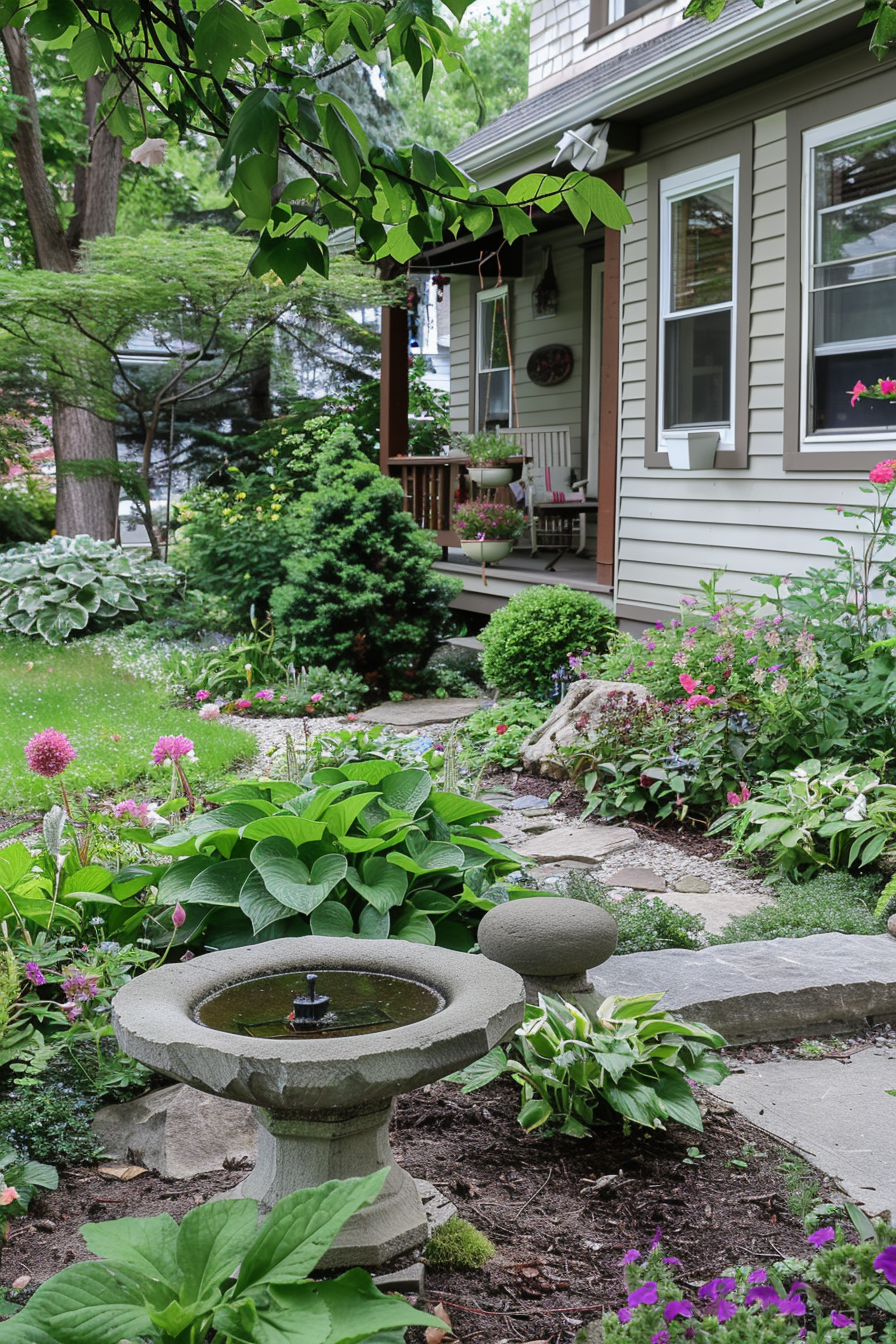
14. Plant Bulbs for a Burst of Spring Color
Spring bulbs like Daffodils, Tulips, and Crocuses provide an early burst of color and are easy to grow in small spaces.
How to Use: Plant bulbs in clusters or drifts for a naturalized look. Mix different types to enjoy a sequence of blooms from early to late spring.
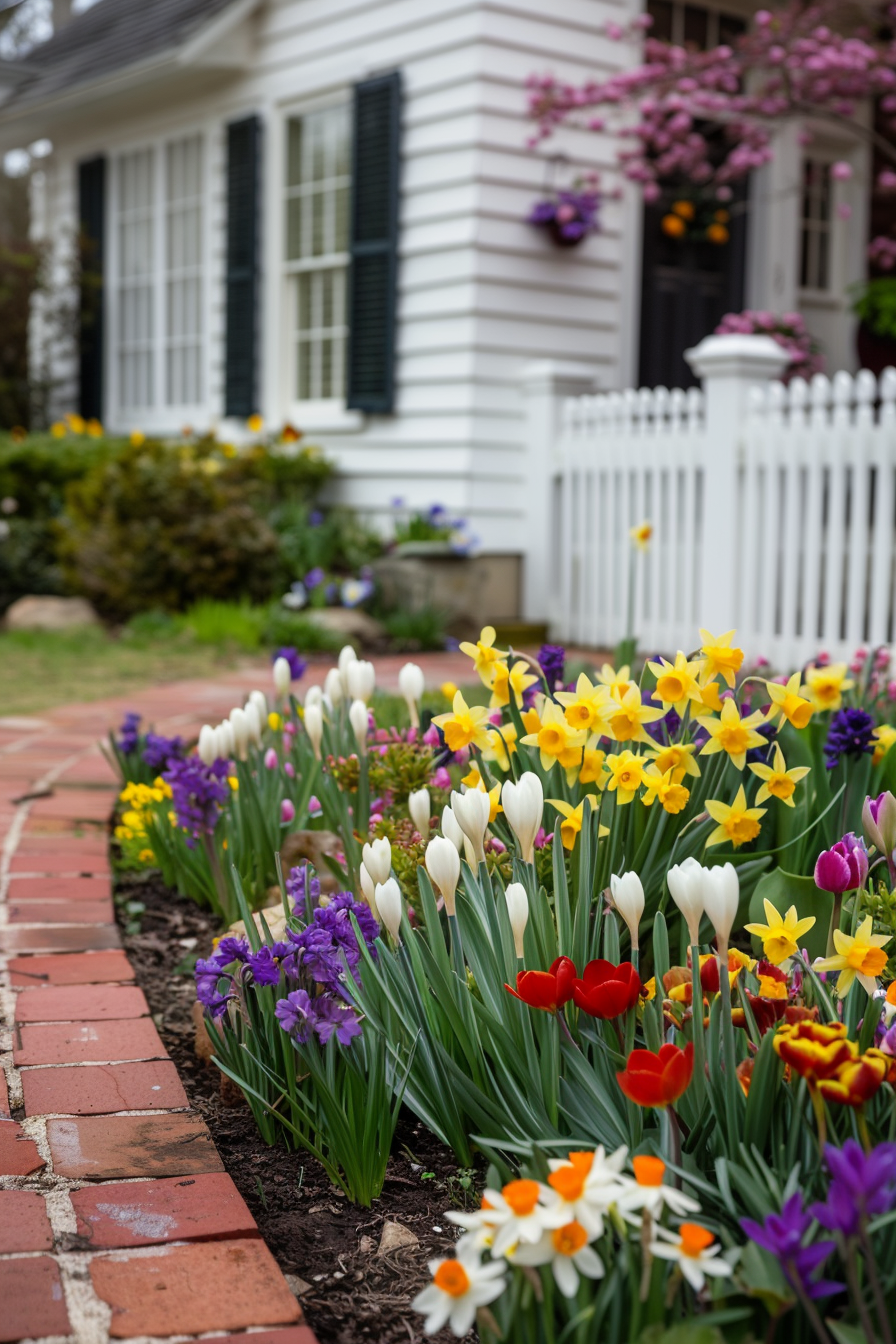
15. Incorporate Edible Plants with Herb Gardens
Herbs like Rosemary, Thyme, and Basil not only add greenery but also provide fresh flavors for your kitchen.
How to Use: Create a small herb garden near your front door or along a pathway. Use decorative containers or plant them directly in the ground for a mix of beauty and functionality.
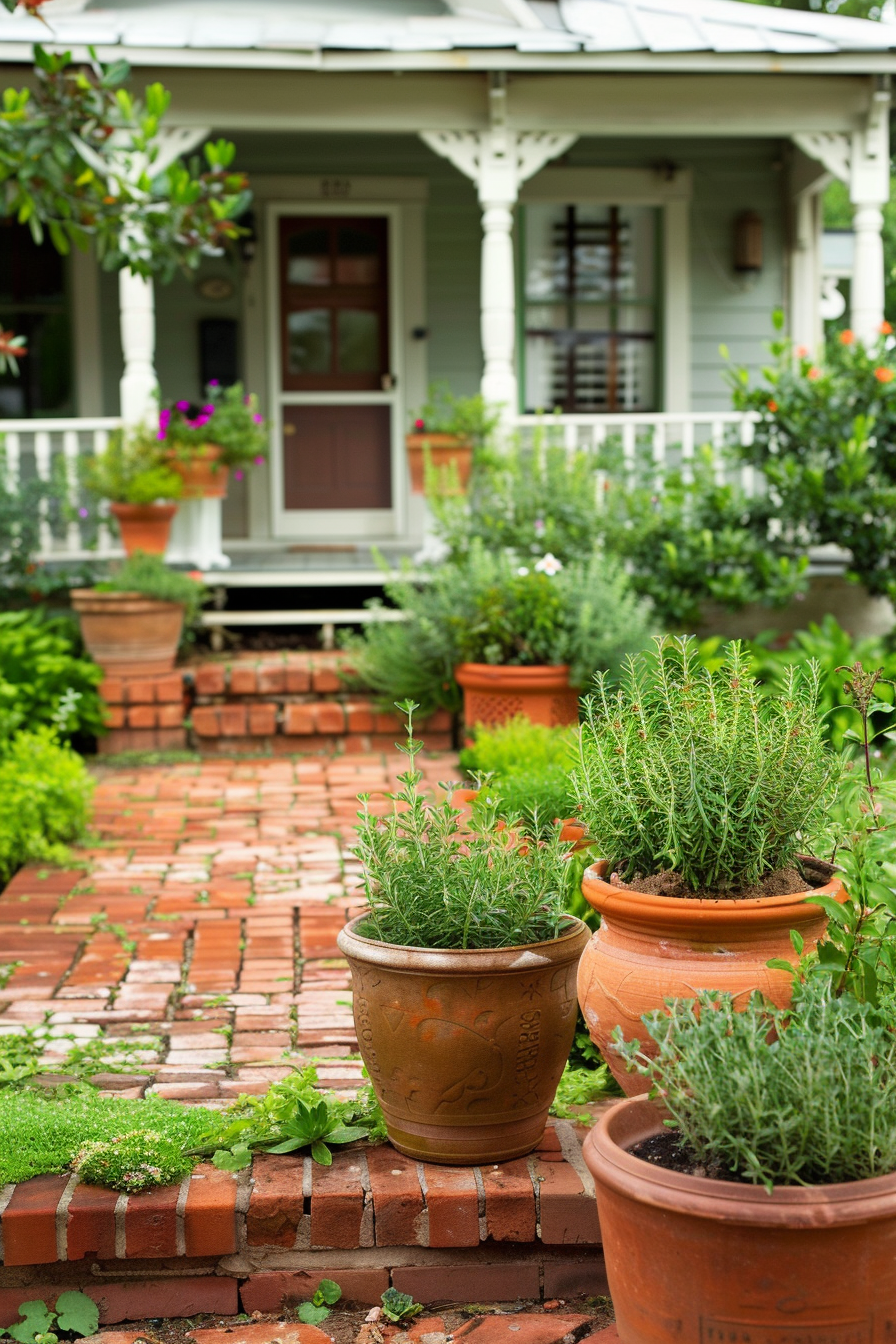
Quick Tips to Pull It All Together
- Think layers: Combine plants of different heights and textures for depth.
- Color coordination: Choose a color palette that complements your home’s exterior.
- Consistency is key: Repeating certain plants or colors creates a cohesive look.
- Less is more: Don’t overcrowd—give each element room to shine.
- Personalize it: Incorporate items that reflect your hobbies or interests.


